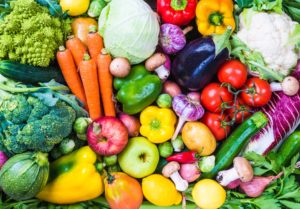For those who resolve to eat healthier or eat clean, your own garden is a great place to begin, and you will need an understanding of the healthiest plants to grow in Texas.
Most are familiar with the super food lists, but many cool-climate berries, protein-laden nuts or omega-rich fish just don’t thrive here. However, there are a lot of nutrient-dense vegetables we can grow right here in South Texas’ growing seasons, which are blissfully, if sometimes blisteringly, longer than other regions’ seasons.
In fact, there are so many Texas veggies and greens easy to grow that to narrow them down, even by health benefits, is daunting. Texas’ growing list stretches long, including asparagus, beets, carrots, broccoli, collard greens, cucumbers, green beans, peppers, spinach, squash, sugar snap peas, sweet potatoes, tomatoes and more. Health benefits cover the map so well that if you set up a buffet of Texas veggies, you’d hit every vitamin panacea. Tomatoes are loaded with vitamin C and lycopene, great for skin and heart. Asparagus supplies bone-building vitamin K, folate and diuretic qualities to banish bloating. Sweet potatoes deliver more than 450 percent of your daily dose of vitamin A, needed for vision and immunity. Brussels sprouts and cauliflower are both packed with glucosinolates, great for detoxing and cancer-fighting.
Collard greens explode with vitamin A, zeaxanthin and lutein for eyesight. Mustard greens muscle in vitamin K. Bok choy’s calcium strengthens bones and weakens PMS symptoms. And we all know spinach makes Popeye strong, but here’s why: One serving provides more than 500 percent of daily vitamin K for healthy bones and blood. The list of nutrients goes on, and the take-home message is not new: “Eat your veggies.”
 But what’s also important to understand is how you eat these foods matters.
But what’s also important to understand is how you eat these foods matters.
Dr. Julie La Barba, medical director of CHEF (Culinary Health Education for Families) at Santa Rosa Children’s Hospital, educates families on good food choices and habits. “Whatever you choose to grow,” she says, “adding just one home-grown ingredient to a meal can make a big impact. Freshly picked vegetables retain many more nutrients — not to mention better flavor — than those transported from far away and stored over time. Peak ripeness equals most nutrient-packed. The combinations of these foods can impact how much your body absorbs.“
Dr. La Barba advocates for culinary medicine, promoting freshness and quality, smart food combinations and food preparation. Cooking time (less is better) and even serving temperature can affect how many nutrients your body absorbs. The CHEF philosophy provides many pieces of interesting health advice, such as a room-temperature watermelon conveys far more lycopene and beta carotene than a chilled watermelon. Also, eat some “good” fat with your veggies to give their nutrients a magic carpet ride to where your body needs them. For example, if you pair avocado with tomatoes, the monounsaturated fat in the avocado allows the tomatoes’ cancer-fighting lycopenes to be more “bioavailable,” (ready to be absorbed by the body) due to the way the body processes the two together. Also, if an iron-containing food is paired with citrus, the body can absorb more iron than without the citrus. So in your dark, leafy, iron-rich garden greens like spinach salad, toss in some mandarin orange slices, or add a squeeze of lemon juice with extra virgin olive oil to release the valuable phytonutrients. You’ll also get an extra dose of anti-oxidizing vitamin C.
“That’s why fat-free salad dressing is such an unneeded product,” says Dr. La Barba. “Not only is it full of fillers and tasteless, but it’s a missed opportunity, as it doesn’t hold the keys to unlock phytonutrients.”
And speaking of citrus, one orange alone supplies more than 100 percent of daily vitamin C, plus calcium and folate, so don’t forget to plant a Texas citrus tree alongside your vegetable victory garden. And, of course, throw a splash of OJ into your New Year’s Champagne to toast your resolution.
FOR MORE INFORMATION ON TEXAS VEGETABLE GARDENING, CHECK OUT:
Chef MD’s Big Book of Culinary Medicine, by John La Puma, M.D.
OR WEB RESOURCES:
www.dirtdoctor.com
www.almanac.com/gardening/planting-dates/TX
By Josie Seeligson









0 Comments